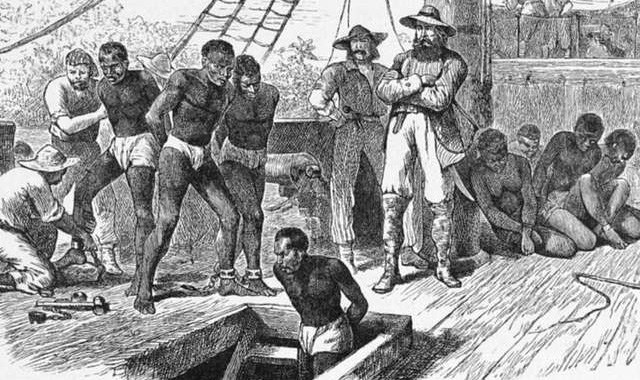
The time to ameliorate the devastating effects of slavery and the extent to which it has stifled Africa’s economic, cultural, and psychological progress is now.
Richard Oduor Oduku
On the of 18th October 1564, four vessels — Jesus of Lübeck and three other ships — set sail from Plymouth to Africa, under the captainship of Naval Commander John Hawkins, a scion of a wealthy maritime family.
His father, William Hawkins, was a prominent figure in the court of Henry III. William was the first Englishmen to explore the “New World” in 1527— a label used by Europeans for North America and South America. He visited ports in Brazil, crossed the Atlantic Ocean, and visited Guinea for trade. John Hawkins, at 21 years old, had caught the sailors bug. He visited Canary Islands, and having heard of a new kind of trade, an enterprise where Englishmen captured people off the African coast and sold them in Spanish Caribbean colonies, he set off for Guinea and Sierra Leone. With his naval force, they attacked villages and captured 300 Africans, who were later sold in the markets of Isabella, Puerto de Plata and Monte Christi. The first slave voyage was doubly lucrative so much that John Hawkins was credited as the first English merchant to profit from the triangle trade.
When Hawkins arrived in England, the tales of his fortunes reached the ears of Queen Elizabeth I. She demanded a piece of the cake. For the second slave voyage (1564-1565), Queen Elizabeth I charted her ship — a 70 ton Jesus of Lübeck — to John Hawkins. The ship flew the Queen’s flag, the Royal Standard. 400 Africans were captured and sold for gold, silver and other precious items. The Queen convinced of the profitability of slave trade henceforth sponsored all subsequent voyages. She provided ships, supplies, and guns. She granted Hawkins a special court of arms bearing the image of a bound enslaved African. Hawkins succeeding voyages to Sierra Leone, over a five-year period (1564-1569), enslaved 1200 Africans and transported them to the Spanish settler markets in the Caribbean island of Hispaniola.
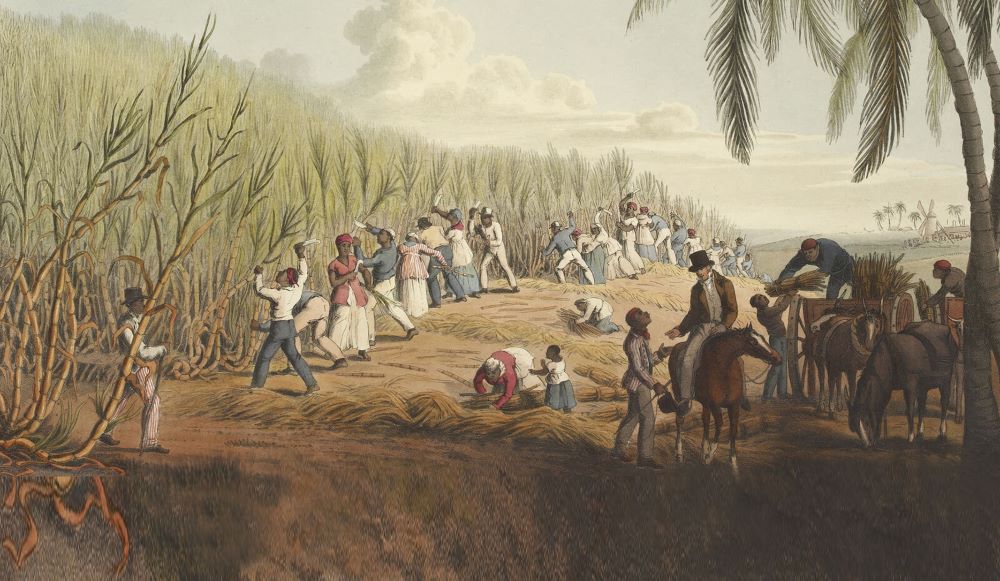 John Hawkins was not a lone participant in the slave trade. As more ships joined in the barbarity, slave trade ballooned to an industrial scale. The Slave Voyages database — a project undertaken by the Emory Center for Digital Scholarship, the University of California at Irvine, and the University of California at Santa Cruz — details the names of vessels, where voyages began, where captives were purchased and landed, and the total embarked and disembarked. I computed the numbers of ship records. A total of 34,148 slave voyages were made from the early years of slave trade to first abolition of 1807. These voyages transported 10.7 million people from the coast of Africa. Of these, 9.2 million disembarked at the end of the journey, implying that 1.5 million people died on the slave ships — from torture, starvation, diseases, or were cast to sea. By the final abolition of slave trade in 1833, nearly 400 years from the first voyage of John Hawkins, 12.5 million Africans had been forcefully uprooted from their lands and cast to foreign lands to work as beasts of burden in plantations, under unforgiving labor and living conditions.
John Hawkins was not a lone participant in the slave trade. As more ships joined in the barbarity, slave trade ballooned to an industrial scale. The Slave Voyages database — a project undertaken by the Emory Center for Digital Scholarship, the University of California at Irvine, and the University of California at Santa Cruz — details the names of vessels, where voyages began, where captives were purchased and landed, and the total embarked and disembarked. I computed the numbers of ship records. A total of 34,148 slave voyages were made from the early years of slave trade to first abolition of 1807. These voyages transported 10.7 million people from the coast of Africa. Of these, 9.2 million disembarked at the end of the journey, implying that 1.5 million people died on the slave ships — from torture, starvation, diseases, or were cast to sea. By the final abolition of slave trade in 1833, nearly 400 years from the first voyage of John Hawkins, 12.5 million Africans had been forcefully uprooted from their lands and cast to foreign lands to work as beasts of burden in plantations, under unforgiving labor and living conditions.
In unearthing the British legacies of slave trade, we look at the institutions that granted it the political, social and economic legitimacy, those that provided the capital for its industrial expansion, and the prominent individuals who gained from slave-ownership and compensation. We renew our spirited call for reparations and embolden the communities that were dispossessed for hundreds of years to persist in the pursuit of justice.
The British Monarchy and Slave Trade
Queen Elizabeth I (1558-1603) was an early investor in the plunder of African peoples. If John Hawkins was the first Englishman to include enslaved Africans in his cargo, Queen Elizabeth provided the political, financial, and social legitimacy. She also provided the military to protect the movement of her investment across the oceans. She planted the seeds of slave trade and watered it. Some of the slaves who were brought to London found themselves as entertainers in her court.
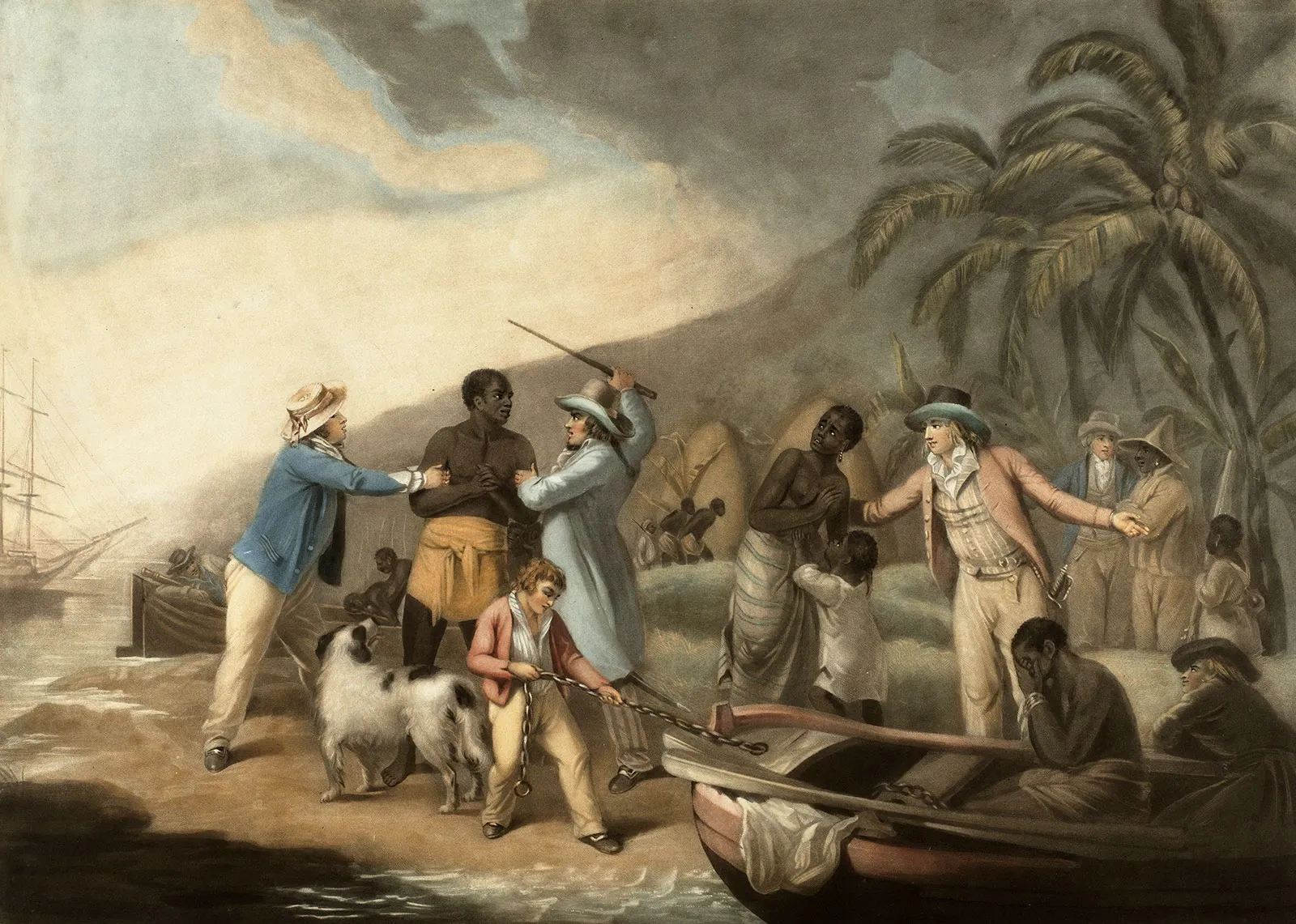
When she died on 24th March 1603, the crown passed to King James I, who, following in her footsteps, granted a patent to The Royal African Company in 1618 to trade for gold and precious woods in Africa. In 1663, he issued another patent to the Company of Royal Adventurers, to capture and sell slaves in West Indies and Virginia. His successor, King Charles II, following in the same footsteps. He founded a new company, Royal Adventurers into Africa. The shareholders of the company were members of the royal family and aristocrats to secure the interests of the monarchy. Signed on 10th January 1663, the charter affirmed the monarchy’s official involvement in the triangle trade. In 1672 the company changed its name to Royal African Company, and with it a warrant signed by King Charles II stating that: “… it shall be and may be lawful to … set to sea such as many ships, pinnaces, and barks as shall be thought fitting … for the buying, selling, bartering and exchanging of, for or with any gold, silver, negroes, slaves, goods wares and manufactures …”
Over the next 50 years, Royal African Company shipped more African slaves to the Americas than any other company in the history of slave trade. Many of these captured Africans were branded with the initials “DY” standing for “Duke of York” and ferried to Caribbean islands and colonies in the Americas to work in sugar plantations. The Slave Voyages database shows that from 1672 to 1713, the Company transported 100,000 enslaves Africans, and by 1731, they had transported more than 187,000 slaves from Africa to English colonies in North, Central and South America.
Slavery: Key historical dates
King George III was also pro-slavery. The monarchy actively engaged in slave trade throughout his reign (1760-1820). Even though Britain was losing control over the Americas, he fought tirelessly against the voices of abolition. The resistance of the monarchy explains why, despite the passing of the Acts of Parliament of 1807 and 1811 that abolished slave trade and made it a felony, slave trade did not end in the British colonies until the passage of the Slavery Abolition Act 1833.
Bank of England
The establishment of the Bank of England in 1694 was necessitated by evolving capital needs. Slave trade required long-term credit facilities. Bank credit was touted as a replacement of the company bond issuances that was the modus operandi for the big players in the London market: East India Company, South Sea Company and Royal African Company. All these companies were involved in non-European overseas slave trade. Their expansion and the evolution of the bank laid the foundation of London as a global financial capital. In the second half of the 18th century, over 90 percent of direct trade between Britain and Africa involved the purchase and shipment of slaves to the New World, and the Bank of England played a pivotal role in providing the long-term credit.
In acknowledgement of its role, the Bank of England admitted being intimately connected to historic slave trade. It acknowledged providing financing to South Sea Company and Royal African Company. They also financed the operations of slave owners. In the 1770s, for instance, the bank loaned money to Alexander & Sons, who were the owners of Bacolet and Chemin Plantations in Grenada. Alexander & Sons used their enslaved workforce as loan security. When the plantations went bankrupt, the bank took over the business. In a list of inventory prepared in 1788, the bank quantified the perceived value of each of the 599 enslaved men, women and children, as property it intended to sell in 1790-91 to recover the loan.
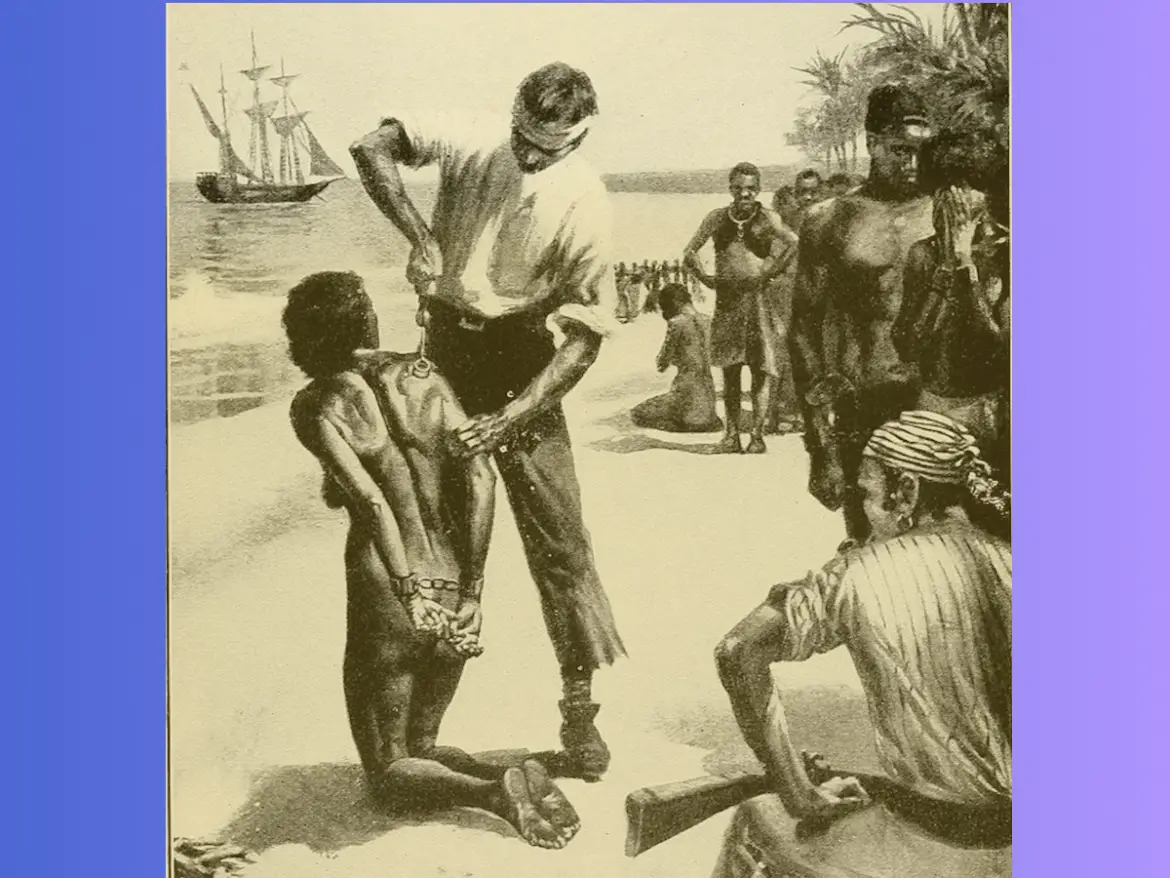
London – The Capital of Slave Trade
London was the capital of slave trade. It was the epicenter of grand plans and the sink for profits. Today it is almost impossible to find any building of historical significance unlinked to slavery and slave trade.
At Gresham Street stands an avatar of that era. Guildhall, a building occupying a special place in the City of London. It is here that the City of London was incorporated. It is also here that the shareholders of Royal Africa Company — 15 Lord Mayors of London, 25 sheriffs and 38 aldermen of the City of London — met regularly between 1660 to 1690 to discuss all issues pertaining to voyages to African coasts, investments in slave trading establishments, transportation of slaves to the Americas and Caribbean, and the goods brought back for trading in England.
Slavery: Key statistics and figures
At the east end of the south wall in Guildhall stands a statue of William Beckford Senior, praised as the “uncrowned king of Jamaica.” Beckford was twice a Mayor of London, an MP for the City of London, and a slave owner running 20,000 acres of plantation agriculture in Jamaica.
The growth of three major British ports: Liverpool, London, and Bristol, was closely associated with slavery and slaveholding, to an extent where one of the anti-abolitionists, James Penny, a ship owner and slave trader, opined that: “should this trade be abolished, it would not only affect the commercial interest … of the County of Lancaster, and more particularly the Town of Liverpool, whose fall, … would be rapid as its rise has been astounding.”
While London and Bristol were initially Britain’s key slave-trading ports, Liverpool began to dominate the trade by 1740 and continued to do so until it was abolished in 1807. Between 1695 and 1807, there were 5,300 voyages from Liverpool to Africa, compared to 3,100 from London and 2,200 from Bristol over the same period.
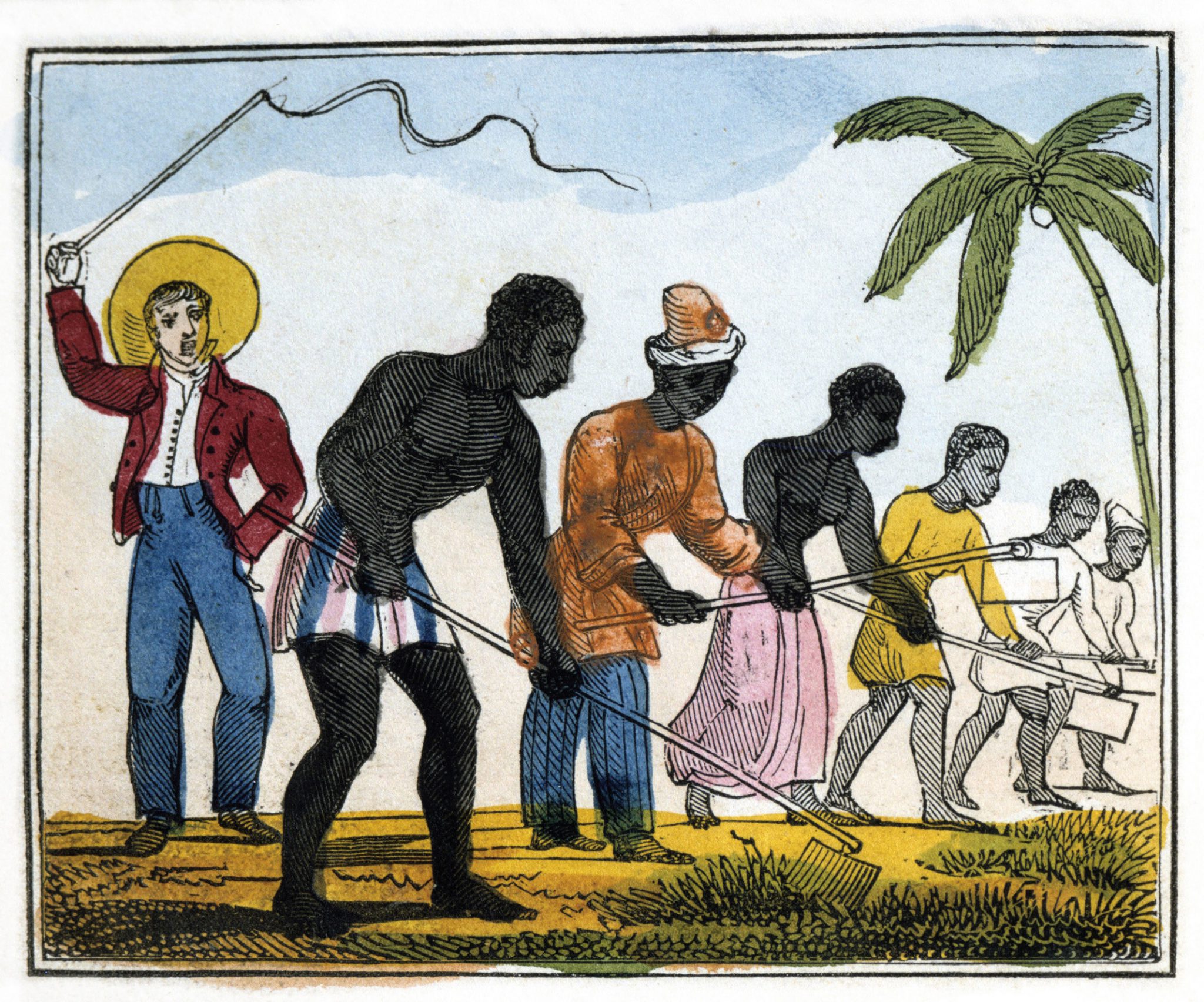
Liverpool owes much of its urban landscape slave trade profits. Slave merchants sailing from the Old Dock, built in 1715, contributed funds for the building of The Bluecoat Chambers, a charity school for the town’s orphans. The Bluecoat Chambers is currently the oldest surviving building in central Liverpool. The first intercity railway in the world — the Liverpool and Manchester Railway — which opened in 1830 also owes its existence to proceeds from slave trade.
Across England, grandiose buildings replete with turrets, picture windows, kitchen gardens, perfectly manicured loans, and rooms stuffed with antiques and objet d’arts, communicate to a time when the fortunes of transatlantic trade washed over the city. In 2020, the National Trust — a body created in 1895 to preserve places of natural beauty and historic interest across the country — released a 115-page “Interim Report on the Connections between Colonialism and Properties now in the Care of National Trust, Including Links with Historic Slavery”. 93 historic places were found to be deeply connected with slavery, slave trade, and colonialism.
Slave Owners and Their Descendants
After nearly 400 years, the Acts of Parliament of 1807 and 1811 abolished the slave trade. Another Act of 1819 created the Office of the Registry of Colonial Slaves in London and authorized it to document pre-existing colonial registers. Even though the 1807 and 1811 Acts of Parliament had abolished slave trade and declared it a felony, it was the Slavery Abolition Act that abolished slavery in British colonies. The Act came into force in 1834. It established the Slave Compensation Commission. The Commission established the list of slave-owners from October 1833 to July 1835. The final list identified 4000 slave-owning families who were eligible for the £20 million in compensation.
Over the past decade, the Centre for the Study of the Legacies of British Slavery at University College London (UCL) have been chronicling the names of British slave-owners, working backwards from the final abolition of slavery with the passage of the Act of Parliament of 1833. The names of these slave owners are gleaned from the documentation of the Slave Compensation Commission, for those who received the £20 million.
At the time, the £20 million borrowed by the British government was equivalent to 40% of the annual national budget, or 5% of GDP, and was the largest loan in the country’s history.
Who are the descendants of the slave owners who received the biggest payouts?
The biggest payout went to John Gladstone. He received £106,769 for the 2,508 slaves he owned across nine plantations. His son, William Gladstone, would later serve as prime minister four times. John Blair, who was an MP at the time, was awarded £83,530, for 1,598 slaves he owned on the plantation he had inherited in British Guyana. The family of former Prime Minister David Cameron also received compensation. Others included the ancestors of the authors George Orwell, Graham Greene, as well as the poet Elizabeth Barrett Browning. George Orwell’s great-grandfather, Charles Blair, owned 218 slaves, for which he received a compensation of £4,442.
Reparation Strategies for the Present and Future
In the absence of compensation for the enslaved, the single act of compensating slave-owners enriched slave-owning families and predisposed millions freed slaves to enduring inequalities. The lack of responsiveness of the British government to calls for reparations has birthed a new strategy which seeks to target the descendants of slave-holding families. These families, having gained from the Slave Compensation Commission, continue to enjoy inherited wealth, passed from generation to generation.
Reparations efforts
Barbados’ National Task Force on Reparations, has started targeting descendants of the slave-owners who enslaved their descendants. In December 2022, Barbados called out Conservative MP Richard Drax over his family’s ownership of a vast sugar plantation on the island. Barbados wants the family to pay reparations or face litigation in the future. They are also heaping pressure on the family of the Oscar-nominated actor, Benedict Cumberbatch, to pay reparations over his family’s ownership of sugar plantations. This approach, more than anything else, removes slavery and slave trade from the dusty shelves of historical records and displays its ongoing effects on the lives of descendants living today. The approach humanizes the call for reparations and the urgency of proportionate settlements.
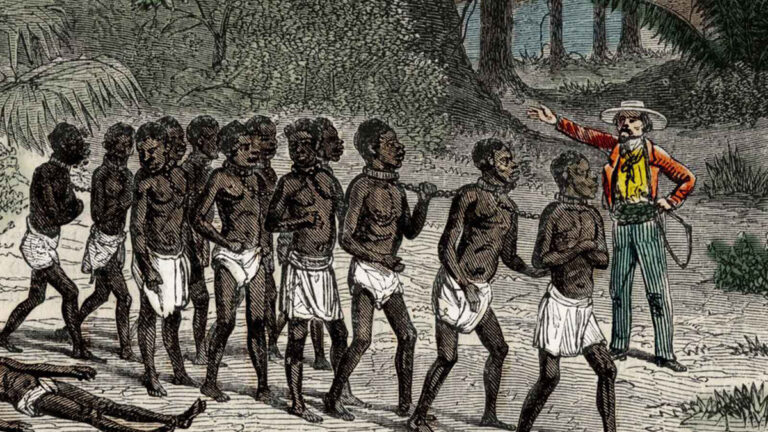
Over the past few decades, Britain and its institutions have been acknowledging their role in slavery and slave trade. The Bank of England, in 2020, was forced to apologize for its historic participation in slave trade. Records indicate that 27 former members, including 11 former bank governors and 16 directors, benefited owned slaves or profited directly from the trade.
What is certain, from historical records, is that slavery was not a marginal enterprise for the British monarchy and its subjects. It was practiced at an industrial scale. Therefore, beyond acknowledging these legacies, the British political system and British citizenry must understand that for the populations of Africa, Americas, the Caribbean, the consequences are still an open wound.
The urgency of the call for reparations was recently brought to focus when King Charles III ascended to the throne following the death of his mother, Queen Elizabeth II. The insistence calls for more responsiveness from the British public. Apologies are not enough!
Ghana’s President, Nana Addo Dankwa Akufo-Addo, speaking at the Reparations and Racial Healing Summit (August, 2022), stressed that these reparations are long overdue. The legacies of slavery are not far off and hidden. They are present in our daily lives. The time to ameliorate the devastating effects of slavery and the extent to which it has stifled Africa’s economic, cultural, and psychological progress is now.
(The article was first published by This Is Africa (TIA), a leading pan-African digital media platform that employs various digital tools and social media platforms to present a credible informed, and accurate reflection of the continent to a global audience)
_____________________
Courtesy: Janata Weekly (Posted on July 23, 2023)